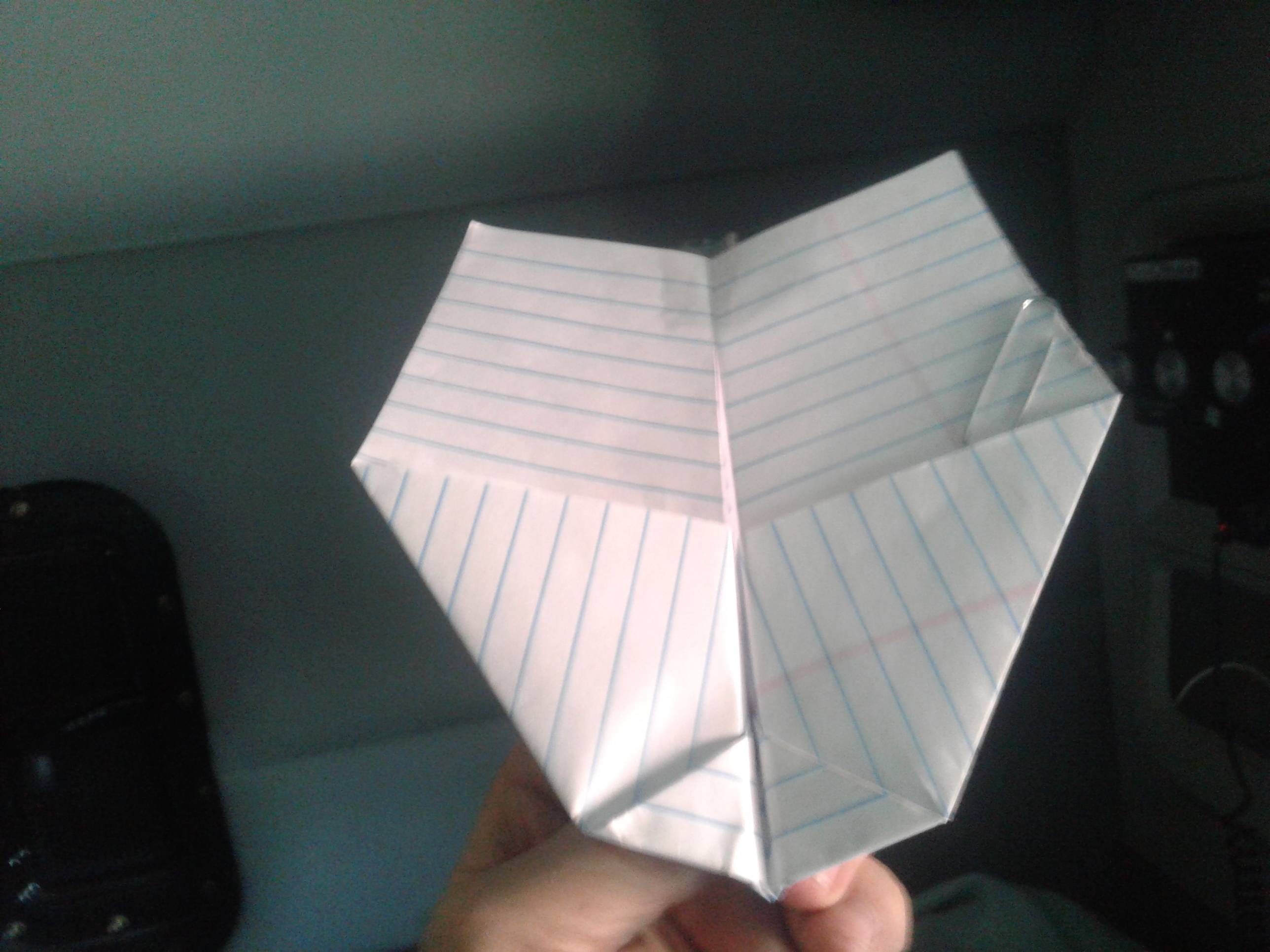Some students learn best when they can see aerodynamic principles in action. I'd really like to be able to show a student how a spin occurs.
Is there a way to make a paper airplane that will enter a developed spin?
Some students learn best when they can see aerodynamic principles in action. I'd really like to be able to show a student how a spin occurs.
Is there a way to make a paper airplane that will enter a developed spin?
Besides the location of the center of gravity, two things determine how an aircraft spins, and both are not well shaped for spinning in paper airplanes:
Also, for spinning it needs a stalled wing, some asymmetry and some time until the spin fully develops. To create a strong pitch-up moment, masses at the tip and the end of the fuselage are also needed. A pure paper airplane will have too much yaw damping and too little inertial pitch up to spin.
Size should be less of an issue because separated flow changes less with Reynolds Number, and spin tunnels regularly use scales of 1:20 or 1:30 with good results. But I wonder whether the low wing loading of a paper airplane will prevent spins - the models used in spin tunnels are carefully sized not only for geometric agreement, but also for their masses and mass distribution.
Maybe it will be better to show your students videos from spin tunnel tests.
I don't know if this will work for you, but I used to put little tears towards the body on the leading edge of the paper airplanes I made. Then I'd bend the leading edge of the wing down a bit to create a stronger airfoil. I'd do this simply to increase lift at low speed, kind of like slats. But I wonder, if you put a tear on only one side and adjusted it properly, perhaps you could make it so that one wing stalls out before the other?
Or, perhaps to be a bit more accurate, you could just go with tears on both sides but adjust one down further than the other. That way it's pretty apparent that on wing is developing more lift at low speed.
If one can handle a little abstraction, a half maple leaf seed is perfect.
The main driver of an established spin is lift and drag asymmetry, resulting in a helical spiral downwards. While fuselage shape and weight distribution are contributing, difference in lift between the two wings results in a slip towards the lower lifting wing.
Once the aircraft starts to slip, the center of drag will determine the the torquing force around the center of gravity. It is here that yaw force is created. The higher drag of the inside wing "locks" the lift asymmetry. Combined with loss of forward speed and stall, the aircraft drops "like a maple seed".
By applying opposite rudder, the pilot stops rotation and "brings the other wing of the maple seed back", which equalizes lift and drag on both sides. The aircraft can then regain airspeed and reduce angle of attack by pitching down.
So, for a small model, a paper clip or some type of weight on one of the wings will do it, along with a lack of wing dihedral. A paper airplane will be more difficult as its larger surface area to weight ratio tends to slow rotation.


One can create drag asymmetry by stalling one wing or with rudder into spin. A sufficient amount, along with lift asymmetry, will cause the "aircraft" to spin. On this particular model, even though the swept leading edge was trying to stabilize to with its "dihedral effect", the destabilizing forces of the rudder and offset of center of lift and center of gravity spun it well.